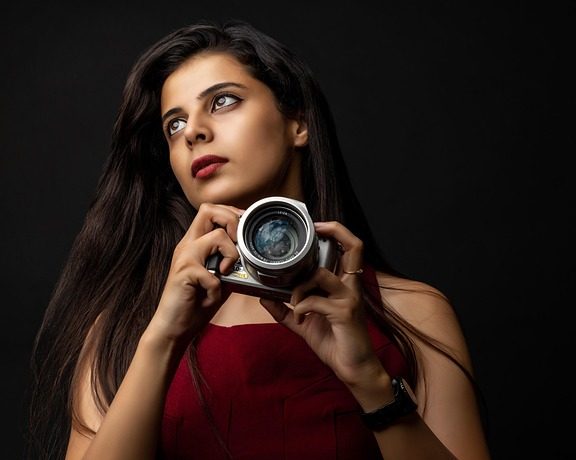The world of photography has seen dramatic transformations over the decades, not just in technology and capabilities but also in the design of cameras themselves. From bulky film cameras to sleek digital devices, the evolution of camera design reflects broader changes in technology, societal needs, and artistic expressions. This article explores key milestones in camera design, examining how aesthetics, functionality, and user experience have evolved over time.
The Birth of Photography: The 19th Century
The history of camera design can be traced back to the early 1800s with the advent of the camera obscura. This early optoelectronic technology laid the groundwork for modern photography. The first true camera, the daguerreotype, was unveiled in 1839 by Louis Daguerre. While not particularly stylish by modern standards, its wooden box construction marked the beginning of portable photography.
As photography gained popularity, aesthetics began to diverge from mere functionality. The introduction of the Box Camera by George Eastman in the late 1880s, particularly the Kodak No. 1, heralded a new era. It was simple and compact, encouraging amateur photographers to “snap” pictures and introduced the slogan, “You press the button, we do the rest.” This design made photography accessible, democratizing the art form.
The Rise of Rangefinders: The Early to Mid-20th Century
The 1920s and 1930s saw the emergence of the rangefinder camera, typically associated with iconic brands like Leica. The design prioritized compactness and portability, establishing the groundwork for modern street photography. Rangefinders featured sleek metal bodies and minimalistic controls, appealing to both amateur and professional photographers alike. They offered improved focus accuracy without the bulkiness of SLR systems, catering to a growing trend of candid photography.
During the post-war era, the introduction of color film and advancements in lens technology led to more stylish designs that merged function and form. The iconic Hasselblad 500 Series, introduced in the 1950s, showcased refined aesthetics and engineering excellence, solidifying its status as a favorite among professional photographers.
SLRs and the Digital Revolution: The 1970s to 1990s
The 1970s brought the Single-Lens Reflex (SLR) camera into the mainstream, characterized by its mirrored design that allowed for a real-time view through the lens via an optical viewfinder. Brands like Canon and Nikon produced stylish SLRs that boasted ergonomic grips, tactile buttons, and customizable features. These cameras not only emphasized functionality but also catered to photographers’ sense of style and identity.
As we transitioned into the digital age in the late 1990s and early 2000s, camera design underwent significant transformations. The move from film to digital sensors changed the internal architecture of cameras while also promoting more streamlined external designs. The iconic Canon EOS D30, released in 2000, was one of the first to combine digital imaging with the robust aesthetic of an SLR.
Compact Cameras and Mirrorless Innovations: The 2000s
The early 2000s brought compact digital cameras, designed for ease of use and portability. These cameras highlighted stylish, lightweight materials and vibrant colors, appealing to a broader audience. Notably, the introduction of the Canon Powershot and Sony Cyber-shot lines showcased sleek, pocket-friendly designs without sacrificing quality.
As technology advanced, mirrorless cameras began to emerge in the late 2000s. Their compact size, minimalist designs, and advanced features captured the interest of photographers seeking the versatility of SLRs without the additional bulk. Companies such as Sony and Fujifilm leveraged retro aesthetics alongside modern technology, offering cameras that were not only functional but also visually appealing.
Today: A Fusion of Style and Technology
In the current landscape, camera design reflects a synthesis of style, user-friendly interfaces, and advanced technology. Today’s cameras emphasize not just photography but also videography, offering features like 4K video and high-quality touchscreen displays. The aesthetic plays a significant role, as brands focus on creating unique identities through their designs.
Fujifilm’s X-series mirrors the retro designs of classic film cameras, while brands like Leica continue to epitomize luxury and craftsmanship. Meanwhile, smartphone cameras challenge traditional cameras with their convenience, prompting manufacturers to innovate rapidly with designs that blend digital connectivity and traditional photographic experience.
Conclusion
The evolution of camera design from the bulky wooden boxes of the 19th century to the sleek, multifunctional devices of today illustrates a fascinating journey influenced by technological advances, cultural shifts, and aesthetic principles. As we move forward, the camera will continue to evolve, merging new technologies with artistic flair. Whether you’re a casual user or a professional photographer, the camera remains an essential tool, not just for capturing moments, but also for expressing individual style and creativity. In this ongoing evolution, one thing is certain: shooting in style will always be an integral part of the photographic experience.






